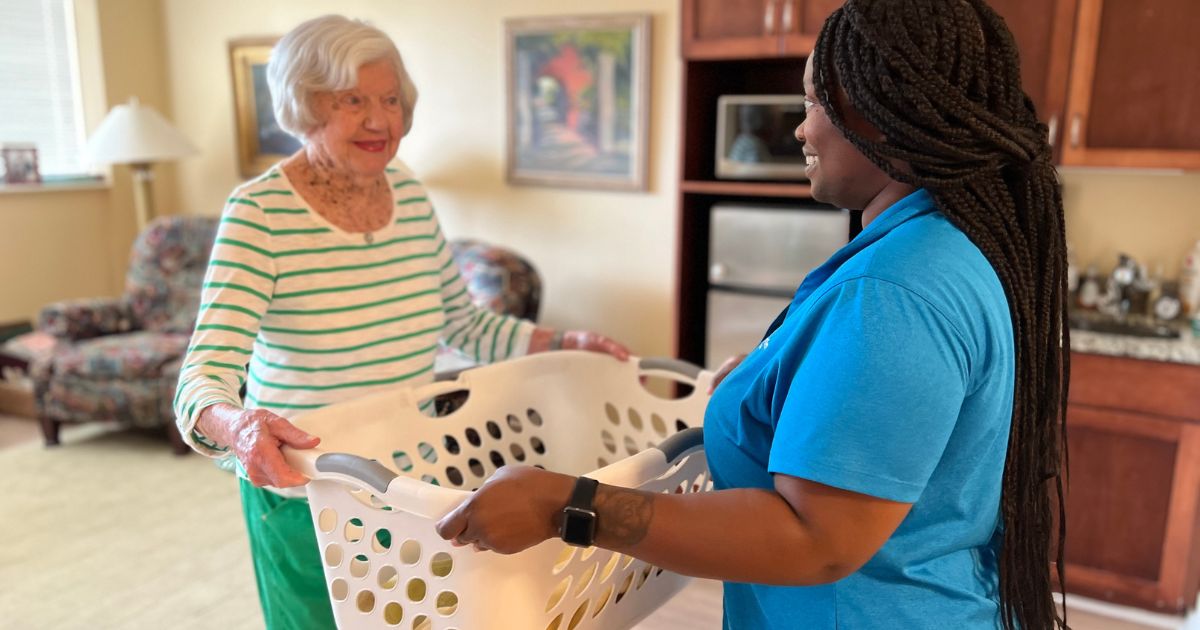In-home care can be a great solution for older adults who prefer to age in place at home but need assistance with daily tasks to remain safe and independent. While considering this option for your loved one, it’s helpful to know what to expect with home care costs.
Understanding the Costs of In-Home Care
The cost of home care varies according to a number of factors. Many in-home care providers charge an hourly rate, but some may have a daily rate option as well if the senior requires more care services.
Here are a few examples of factors that may influence in-home care costs:
- Level of care needed: grooming, mobility, light housekeeping, meal preparation, and more
- Frequency: how often and how long care is provided
You can typically expect a complimentary assessment by a home care team that outlines a customized plan of care for you to consider. This evaluation will also include costs and the pricing structure so you understand how costs can change if your loved one’s needs change over time.
How to Pay for Home Care
Many home care providers like Abe’s Garden at Home are bonded Licensed Personal Support Services Agencies. This means the care services may qualify for long-term care insurance coverage or as a VA Aid and Attendance benefit. Some agencies may accept Medicaid as well, but make sure to inquire with the agency to learn about payment options.
Here are examples of financial options for in-home care:
- Long-term care insurance: This type of insurance is designed to cover services that regular health insurance doesn’t cover, including in-home care. However long-term care insurance is typically purchased earlier in life, before services are needed.
- Veteran’s benefits: If your loved one is a veteran or a spouse of a veteran, they may be eligible for in-home care coverage benefits through the U.S. Department of Veterans Affairs (VA).
- Medicaid: If your loved one has limited income and assets, they might qualify for Medicaid – which in some states does cover in-home care services.
- Out-of-pocket: Many families pay for home care privately using savings, retirement accounts, or help from loved ones.
- Reverse mortgage: If your loved one owns a home, they may want to research pros and cons of a reverse mortgage to help fund their care.
- Life insurance policies: Some life insurance policies can be converted to provide a cash benefit to help cover the cost of home care.
Budgeting Tips for In-Home Care
Consider the following tips when budgeting for in-home care for a loved one:
- Assess your loved one’s needs so you understand the frequency and type of care they require.
- Research the costs of home care agencies in your area to get an idea of the average costs you can expect.
- Plan for increased costs as your loved one’s health needs may change over time, requiring additional home care assistance or installing safety features in their home.
- Save for the unexpected as your loved one may require a transition to a senior living community in the future.
- Explore available tax deductions to maximize your potential savings each year.
Are You Ready to Explore In-Home Care?
Download our free guide, “Compassionate Support from the Comfort of Home: A Guide to Abe’s Garden at Home,” to help you understand the options available to you and your loved one. You’ll learn about our approach, the benefits of in-home care, our service offerings, and how to get started.

